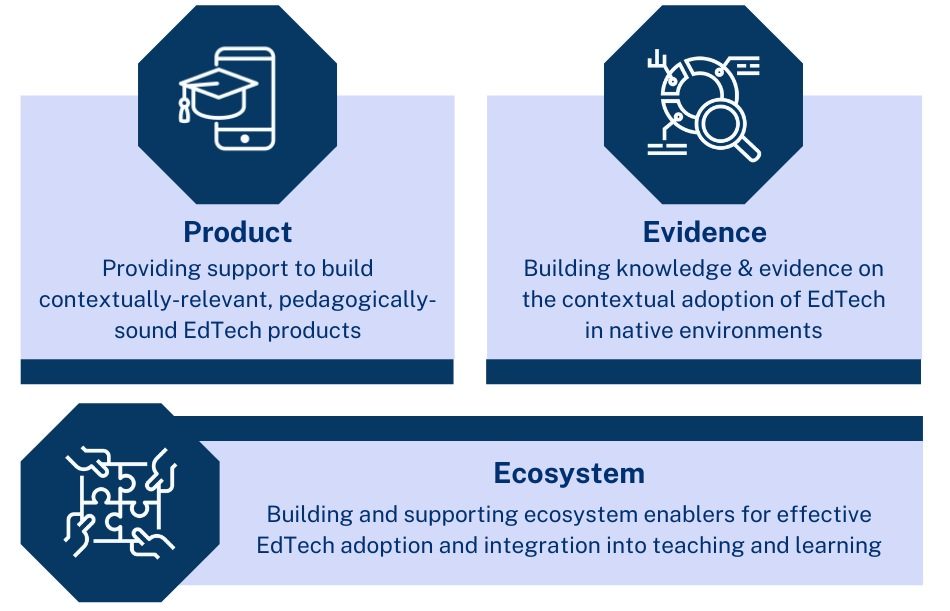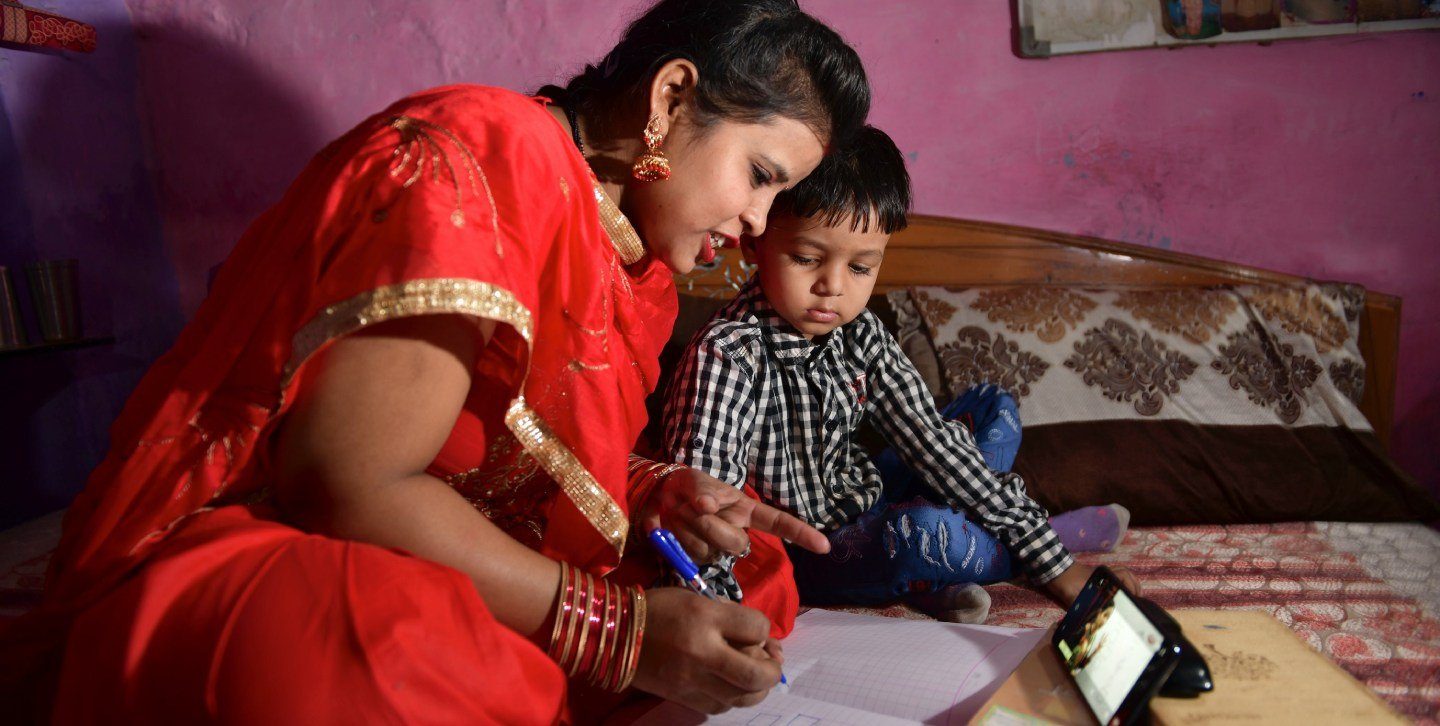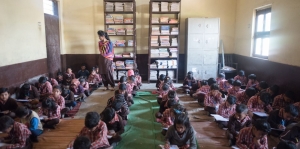India has been facing a learning crisis for many years. Already, prior to the COVID-19 pandemic, 55% of India’s children were unable to read or understand simple texts at the age of 10.
In addition to poor learning outcomes, systemic challenges are prevalent in the country, including a shortfall of nearly 1.1 million teachers and poor retention as students move into higher grades.
These challenges were exacerbated by the pandemic, as India saw one of the longest school closures in the world, with schools partially or completely closed for over 18 months.
At the Central Square Foundation (CSF) we are firm believers that poor education outcomes are not a fatality, and that solutions exist to ensure quality education for all children in India.
And to achieve this, we made the bet a decade ago that technology has the potential to democratize the quality of education, particularly for low-income communities.
What does the EdTech landscape look like in India?
Catalytic growth, disruption and innovation are afoot in the EdTech space in India, riding on the wave of increased digital access and a burgeoning supply. We have seen device penetration in rural areas steadily increase by 31% over the last 4 years to reach 68% of households.
This improvement, and India’s standing as the largest mobile data consumer in the world, make the country an ideal ground for using technology to support learning. There remains, however, great untapped opportunity as most EdTech solutions are geared primarily towards English-speaking, high-income households. At an estimated average cost of INR 20,000 (or $260) annually[1], these solutions are simply out of reach in low-income settings. And despite a vibrant ecosystem of over 9,500 EdTech players, only a small percentage focus on foundational learning in literacy and numeracy.
Addressing these structural gaps in the EdTech ecosystem requires us to look at three fundamental questions: how can the offering be fit-for-purpose in low-income settings? How do we generate evidence about what works and what does not, in a specific context? And what are the key ecosystem enablers of effective EdTech adoption at scale?
We answer these questions by working with EdTech solutions that aim to build high-quality products for low-income families, in an effort to meaningfully integrate in-school instruction with at-home learning. These are some lessons we have learned on our journey.

1. What is the offering and how can we make it fit low-income settings?
Understanding what the core product offering of an EdTech solution is and seeing how it can be fine-tuned and iterated for specific contexts are critical. This process starts with contextualization, a vital step in addressing the wide supply-and-demand gap in EdTech.
Research shows that students struggle to use products that are not in their native languages, when content is not aligned with their ability, and when unfamiliar, non-localized examples are used.
We supported for example the contextualization of EdTech products like MindSpark, Khan Academy and ConveGenius. What we did was ensure that these products were aligned with local curricula, translated into local languages, adapted to different learning abilities (through voiceovers for example, for students unable to read the text), and referred to real-life examples that made sense for learners. We found that these aspects of contextualization were key in ensuring the successful adoption of the products in government-run schools.
We have also found that it is important to explore variety in delivery, as each model comes with different learnings on access, reach and engagement. Our portfolio contains a wide spectrum of products, ranging from models that are government-led, making them inherently scalable, to models that are community-based, allowing for increased engagement.
Rocket Learning for example leverages WhatsApp and a system of automated nudges, all of which are driven and pushed by existing infrastructure within state governments. This model has proven to be highly scalable, currently adopted by 3 states across 35 districts.
On the other hand, a product such as Saarthi Education is a community-anchored approach that relies on members of the community to deliver a high-quality, practice-based learning package, using a combination of WhatsApp, phone calls and in-person interactions. This model has been highly successful in engaging students, with over 85% of children responding to daily maths worksheets of 40 questions each.
2. How do we generate evidence of adoption in response to the context?
Meaningful adoption and effective implementation of EdTech are complex and multi-faceted. Generating evidence of how a product, hypothesis, or use-case of EdTech can be implemented effectively in native, contextual settings, such as government schools or affordable private schools, is thus essential.
For example, we worked with Chimple, a game-based, personalized learning app and a finalist for the Global Learning XPRIZE, to implement their solution in a teacher-led at-home learning environment.
The process involved experimenting with program design elements to arrive at an ideal engagement on the app – including how to train teachers and build their capacity for data-informed instruction; understanding how the app’s curriculum could be integrated into their lesson plans; and experimenting with nudges and behavior change messaging to help gain teachers’ buy-in to, in turn, influence parents and students.
It is this close engagement with learning agents – teachers, parents, and communities – that makes for successful EdTech programs because they support the continuum of learning between school and home, a trend we see growing.
However, understanding learning agents’ needs and creating evidence of how to address them is key. For example, one of our partners, Top Parent, an app-based solution, has been experimenting with novel ways of providing parents with additional support in the form of behavioral nudges toward engaging on the learning solution.
3. What are key enablers that support the sustainability and growth of EdTech solutions?
So how do we bring this all together? Creating a favorable policy and supportive ecosystem is critical for continued innovation and sustainable, long-term adoption of EdTech. In order to do so, governments and other learning agents need to have a clear vision and focus on how technology can be integrated into education. There are two levers to this:
- Generating evidence to address information asymmetry on EdTech: the lack of awareness of “what good EdTech looks like”, given the overwhelming variety in products, features, targets, costs and technology platforms, needs to be addressed. EdTech Tulna, a product evaluation index we developed together with the Indian Institute of Technology – Bombay, intends to do precisely this. The Tulna frameworks have been built using rigorous research principles and global best practices on content quality, pedagogy, design and user learning experience. The aim is two-fold: (1) to create tools to evaluate EdTech solutions; and (2) to make evaluations of existing EdTech solutions publicly available. Our objective is to equip decision-makers with the tools and knowledge they need by promoting learning-oriented, evidence-based information. With the growing interest in using technology for learning, it is paramount to build evidence around what works to unlock meaningful adoption. In order to inform policy and program design, CSF aims to generate robust evidence on EdTech across the ‘product-program-scale’ continuum to facilitate adoption at all levels.
- Partnerships that can enable scale: India’s education ecosystem is dynamic and vibrant – with many players using innovative approaches to move the needle on learning. However, there is a need for an aligned vision amongst different stakeholders, including governments, policymakers, academia, product ecosystem and school systems, in how technology can help solve some of the biggest challenges our system faces.
The way forward
We remain optimistic about the power of technology to eliminate the borders and walls of the classroom so that every child has access to the best quality education, both in school and at home.
The synergistic actions of governments, for- and not-for-profit EdTech companies, academics, teachers and parents can be transformational and help us reimagine traditional ways of teaching and learning to positively impact the learning outcomes of our children.
This article was first published in Global Partnership for Education on May 18, 2022. Read here.
Note
[1] This refers to the estimated average subscription cost of EdTech products available in India, excluding costs of purchasing and maintenance of a device.



